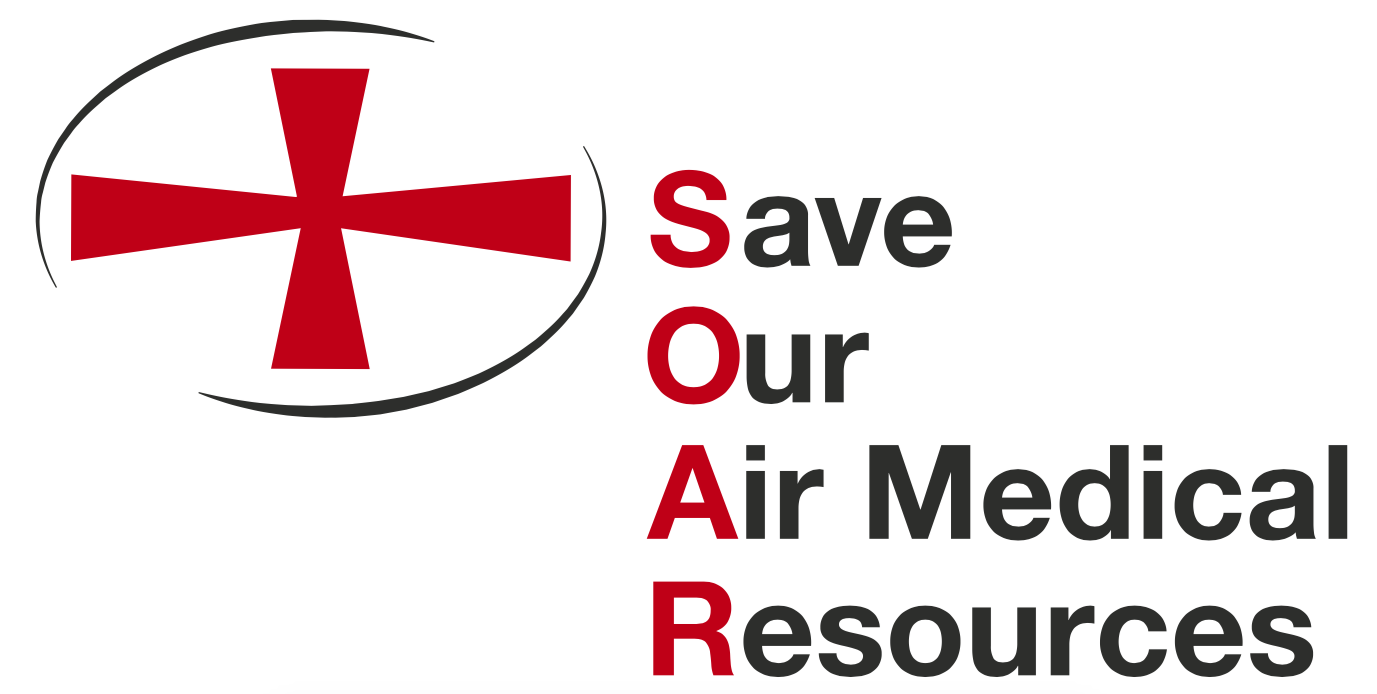What is the SOAR campaign?
Save Our Air Medical Resources is a national campaign dedicated to preserving access to emergency air medical services for Americans across the country by providing important education and resources to the public and policymakers. SOAR seeks to spread the understanding that air medical services are a critical element of emergency response across the country, particularly in rural areas where access to hospitals and trauma care facilities is increasingly limited as hospitals close at alarming rates.
Who is involved in the campaign?
The SOAR campaign has a number of partners and supporters, including the air medical industry that operates in 48 states around the country, patient and consumer advocate groups, and rural health organizations. We are working with a broad range of stakeholders to preserve and expand this critical element of emergency response.
What is the impetus behind the SOAR campaign?
Air medical transport is essential for rural communities to have access to high quality and timely trauma, cardiac, and stroke care. It is time to act to preserve this critical service. Since 2010, over 130 rural hospitals have closed, and today there are hundreds of additional hospitals that are on the brink of closure in rural America as a result of the COVID-19 pandemic and other pressures. The result is that patients must travel farther to get emergency care.
About 8.6 million people live outside a 30-minute drive from the nearest emergency room and 30% of the U.S. population relies on air medical transport for access to Level I or Level II trauma centers for time-sensitive trauma injuries. During trauma, time is critical in managing injuries and improving outcomes. Without air medical transport, these people literally have no way to get to trauma centers within that critical window.
Air ambulances provide a very high level of life-saving care that involves highly-trained nurses, paramedics, pilots, and state-of-the-art medical equipment. They only respond when called upon by a first responder or physician and never self-dispatch. And when they are called, they go immediately, helping to expand the reach of hospitals and trauma centers and ensuring that rural communities maintain access to medical care.
There is an unsustainable problem, however: air medical service providers are being squeezed by drastically low government reimbursement rates and some large insurers who refuse to negotiate in-network agreements in good faith. The rules of the No Surprises Act, passed in December 2020, have been written in a way that tips the scale in favor of large insurers and will create unsustainably low reimbursement rates for providers. This will cause air medical bases in critical locations across rural America to close down as a result. Real lives and rural communities are being put at risk.
What are you hoping to accomplish with the SOAR campaign?
Most importantly, we want to preserve air medical services in communities all over the country.
To do that, we must fix the dramatic shortfall in Medicare reimbursement by using cost data to update the Medicare fee schedule for air medical transport. The current fee schedule was set in 1998 and is completely disconnected from actual cost data. It’s time for the U.S. Department of Health and Human Services to collect accurate transport cost data and update the reimbursement rate to reflect the realities of operating an air medical base.
Insurers and air medical transport providers must work in good faith to forge fair in-network agreements that ensure sustainable reimbursement rates for providers, allowing them to continue operations.
Lastly, the rules for the No Surprises Act must be amended to align with Congressional intent and to provide a fair and balanced approach to resolving billing disputes between providers and payers. The interim final rules published in 2021 threaten continued access to air medical services by some of the most vulnerable populations in rural America. The rules do not take into consideration the unique aspects of air medical services – particularly the differences between hospital-based and independent providers – and will have the unintended consequence of drastically reducing air ambulance access in rural communities, putting patient health and safety at risk.
How does air medical transport work?
When there is a trauma or an acute injury, air medical services are dispatched by either a physician or first-responder. Helicopters or fixed wing aircraft are deployed without regard to a patient’s ability to pay – safe transport and clinical care are the only concerns.
The vast majority (90%) of patients are transported because they have suffered a serious cardiac event, stroke, or trauma.
When transporting patients, air medical services provide ICU-level life-saving care in route to the nearest emergency room or trauma center.
How can I get involved in the campaign?
There are a number of ways you can get involved in the SOAR campaign, ranging from contacting your legislator on behalf of the campaign, signing up for the campaign to get updates along the way, and even sharing a story about how air medical has impacted your life. Please visit our Take Action page for more ways to get involved.
